By Lisa D. Mickey
It’s hard to wrap your brain around one million pounds of oyster shells.
But for Marine Discovery Center’s Shuck & Share Oyster Recycling program, it’s even harder to think of those shells going into the county landfill rather than into the Indian River Lagoon to help grow new oyster reefs or to stabilize shoreline in the fragile estuary.
The program reached that million-pound milestone in early 2024, and organizers say they are even more focused on future shoreline restoration possibilities throughout the state.
“This milestone means a lot of things,” said Tess Sailor-Tynes, MDC’s Conservation Science Coordinator. “In addition to being able to divert all of that shell from a landfill, the shell is going into community restoration practices that involve community members, corporations and school groups, creating a ripple effect of understanding of what we can do to protect and preserve our local habitats.”
The Shuck & Share program was launched in 2013 and the first oyster shells were collected at local restaurants in 2014. Initially, a handful of restaurants agreed to save shells from diners’ meals and donate the shells to MDC. Now, 13 restaurants in Volusia County are onboard.
In addition to Volusia County, nine other coastal counties have adopted the Shuck & Share program. Restaurants in the participating counties across the state are working to make the shells key to the success of shoreline restoration programs up and down Florida’s East Coast, as well as in Sarasota and Tampa Bay.
But the program’s start in 2013 was slow and carefully navigated by Annie Morgan Roddenberry when she was hired by Marine Discovery Center to start a grant-funded oyster recycling program. Roddenberry contacted coordinators of existing oyster recycling programs in Louisiana, the Chesapeake Bay region and also visited Guana Tolomato Matanzas National Estuarine Research Reserve, which already had an oyster recycling program in place.
With grant funding, she also bought a trailer to haul oyster shells, buckets, rolling totes and worked with volunteers to clear a back parking lot at MDC. In addition, she negotiated a deal with the Florida Fish and Wildlife Conservation Commission (FWC) to use a retiring truck to transport shell.
During this program prep time, she toyed with what to name the upstart program, brainstorming with her mother, Nancy Morgan. Her mom suggested “Shuck & Share” and the name stuck.
Of course, the next task was to get the program off the ground. Roddenberry began calling local restaurants in New Smyrna Beach, explaining the concept of collecting oyster shells for shoreline restoration and asking restaurants to hold their shells for pickup by the new Shuck & Share program.
“I vividly remember how nervous I was to call the first restaurant,” said Roddenberry, now a biological scientist with FWC working in aquatic habitat conservation and restoration.
“But many of the restaurant owners and kitchen staff expressed their love of nature, fishing and being on the water and before I knew it, we had 10 restaurants on board,” she added. “Everyone was excited to do something meaningful in their community and give back to the lagoon.”
Waste Pro came onboard as a partner in the program, committing to pick up shells using specialized equipment from the restaurants that donated larger quantities of shell. Oyster shells from the participating restaurants were either collected weekly by MDC volunteers or by Waste Pro for the heavier loads – a system that currently is still in place.
Collected shells are then taken to a back lot on the center’s campus where they are deposited and dated for a designated period of quarantine. The shells sit in the lot for a minimum of six months – a standard set by the National Oceanic and Atmospheric Administration (NOAA) – to assure that shells are bacteria-free and ready for use in restoration.
Shuck & Share initially started using shell material attached to UV-resistant oyster mats and stuffed into marine-grade mesh bags constructed by MDC staff and volunteers. The bags and mats were transported to various deployment sites in the Indian River Lagoon for installations orchestrated by the University of Central Florida and Dr. Linda Walters, who has overseen shoreline restoration in the lagoon for more than two decades.
Walters would identify locations within the lagoon system where shoreline restoration was needed. Working with MDC and its team of volunteers, as well as UCF graduate students and undergrads, the crew would build the “oyster infrastructure” and follow Walters’ lead to provide the necessary number of mats and bags to the restoration sites using boats.
Using a “fire line” method of moving the oyster mats and bags to the shoreline from the transport boat, the teams utilized restoration techniques with whichever oyster product was needed, along with planting small mangrove trees and Spartina alterniflora (cord grass) plugs strategically along a restored shoreline.
Roddenberry left MDC to take a restoration position with FWC, handing over the Shuck & Share program in 2013 to Jessy Wayles, a UCF graduate who was familiar with the program. Wayles was eager to help the program continue moving forward and remained at MDC as the Conservation Science Coordinator for eight years.
Wayles left to take a position with the IRL Council in 2022, handing over Shuck & Share to Sailor-Tynes, who has helped the ever-expanding program change and adapt its methodology with newer restoration materials.
For example, Shuck & Share swapped out the former plastic mesh bags for galvanized steel mesh (typically used for crab traps). Another product called BESE, which is a potato chip by-product developed in The Netherlands, has replaced plastic oyster mats. The list of restoration products created by volunteers and staff also includes items known as oyster volcanos, patties, oyster pillows, oyster pies and oyster gabions.
And using those volunteer-produced items, since the program started, Shuck & Share has helped restore around 20,000 feet of shoreline.
“The whole point of creating a living shoreline through restoration is we’re mimicking what we see along our native habitats and we’re using these restoration units to repair shorelines that are more degraded,” said Sailor-Tynes.
None of the women associated with the program are surprised at the growth and success of Shuck & Share, but each can’t help but smile when asked about the million-pound milestone in just over a decade of concerted oyster recycling for restoration.
“I’m so excited this has happened and it’s been a long time coming,” said Wayles, now serving as the Northern Indian River Lagoon Community Engagement Coordinator with the IRL Council. “It’s just so cool that shell from Volusia County is literally all over Florida creating oyster reefs and protecting shorelines.”
Tasked with orchestrating the program’s volunteers who range from high school students to retired working professionals, Sailor-Tynes said the growth of Shuck & Share has only been possible by many others who have contributed to its success.
“I’m so grateful for the different generosities along the way, whether it’s been time, money or materials that others have given to this program,” she said. “It’s incredible to have reached this milestone and I’m happy to be a part of it.”
And while Shuck & Share’s non-profit partners, such as Brevard Zoo, Florida Oceanographic Society and other shell recycling programs have provided habitat restoration materials, Roddenberry noted that participating communities have made the program what it is today.
“Seeing Shuck & Share reach one million pounds of shells recycled is a shining example of how one idea can make a big difference,” she said. “That’s one million pounds of shell that is not sitting in our landfill. That’s one million pounds of shell that was touched by hands in our community wanting to make a difference. And that’s one million pounds of shell that’s back in the Indian River Lagoon providing habitat for fish and wildlife.”
How can you help?
Visit supporting restaurants to eat oysters and if you have a private event and are serving oysters, contact MDC at 386.428.4828. We’ll pick up your shells or accept your shell donation.
To learn more, visit:
ShuckandShare.org
Which Volusia County restaurants participate in the Shuck & Share program?
New Smyrna Beach: McKenna’s Place, Chase’s on the Beach, The Baker’s Table, City Market Bistro, Off the Hook Raw Bar & Grill, Outriggers Tiki Bar & Grille
Oak Hill: Goodrich Seafood Restaurant
Port Orange: McKenna’s Place
Ponce Inlet: Off the Hook at Inlet Harbor
Daytona: Stoney Farms
Ormond Beach: 63 Sovereign, Riptides Raw Bar & Grill

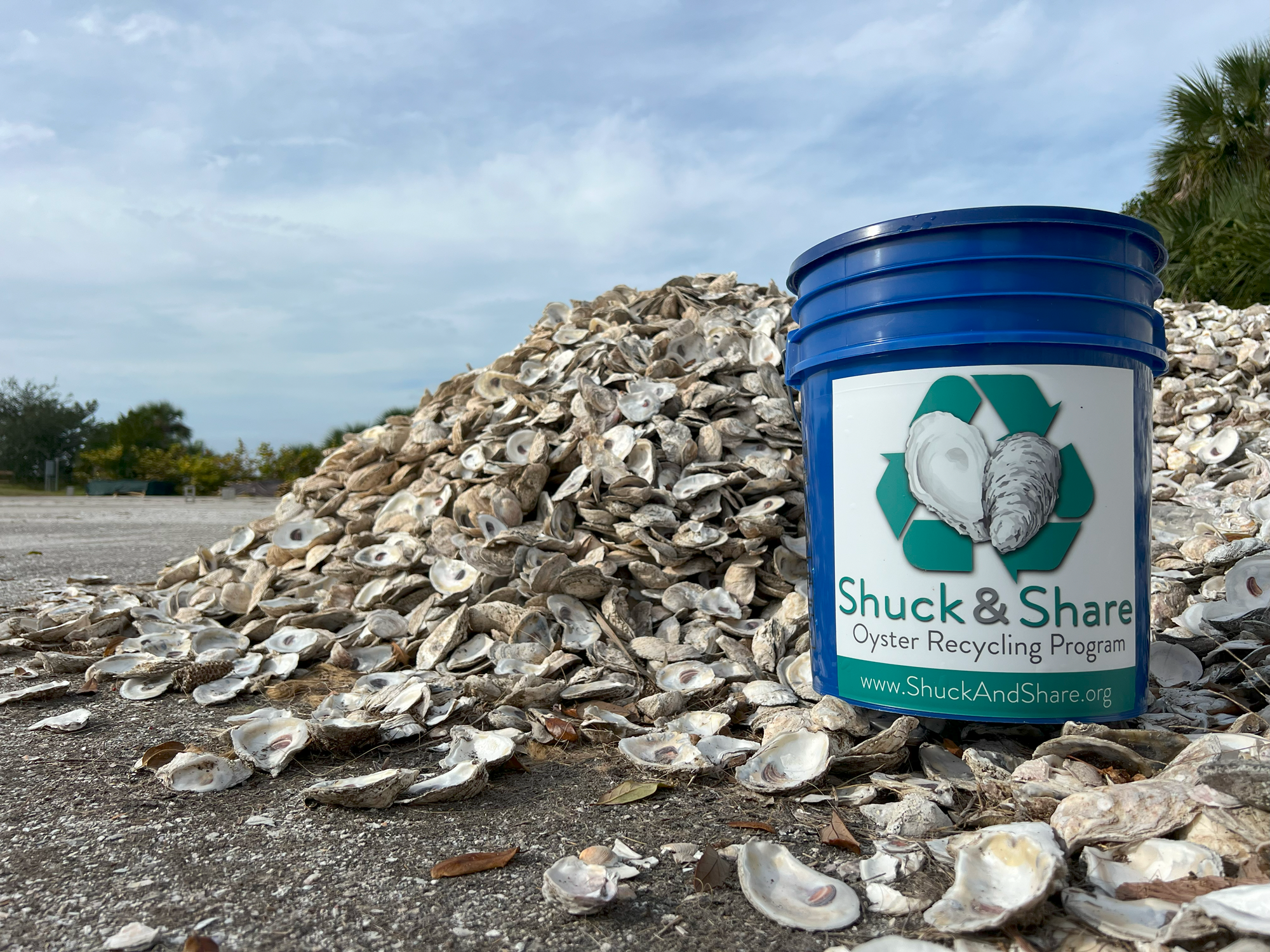
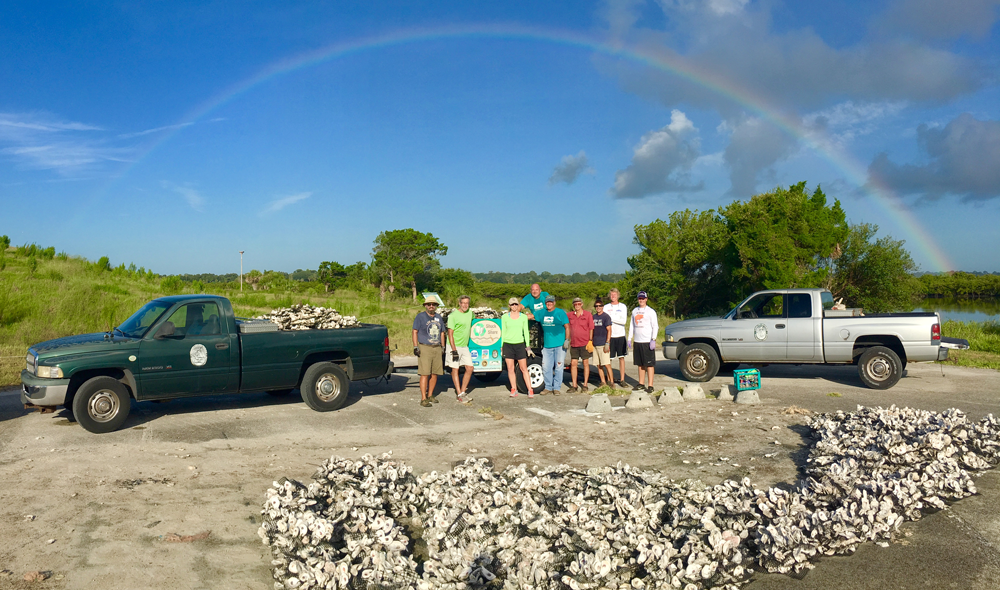
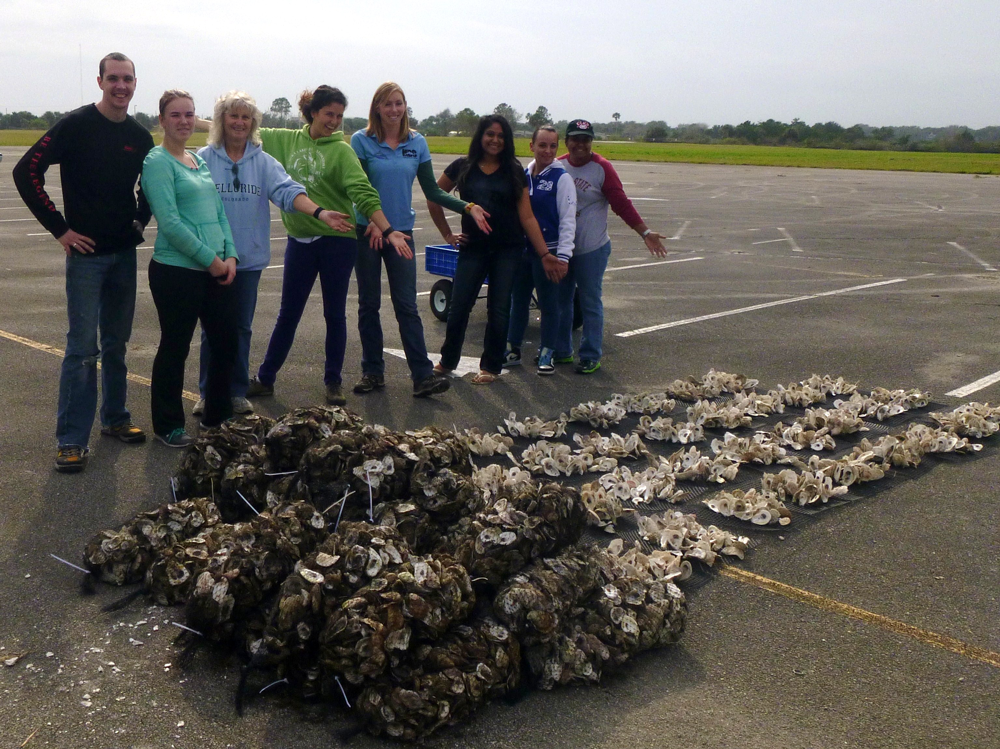
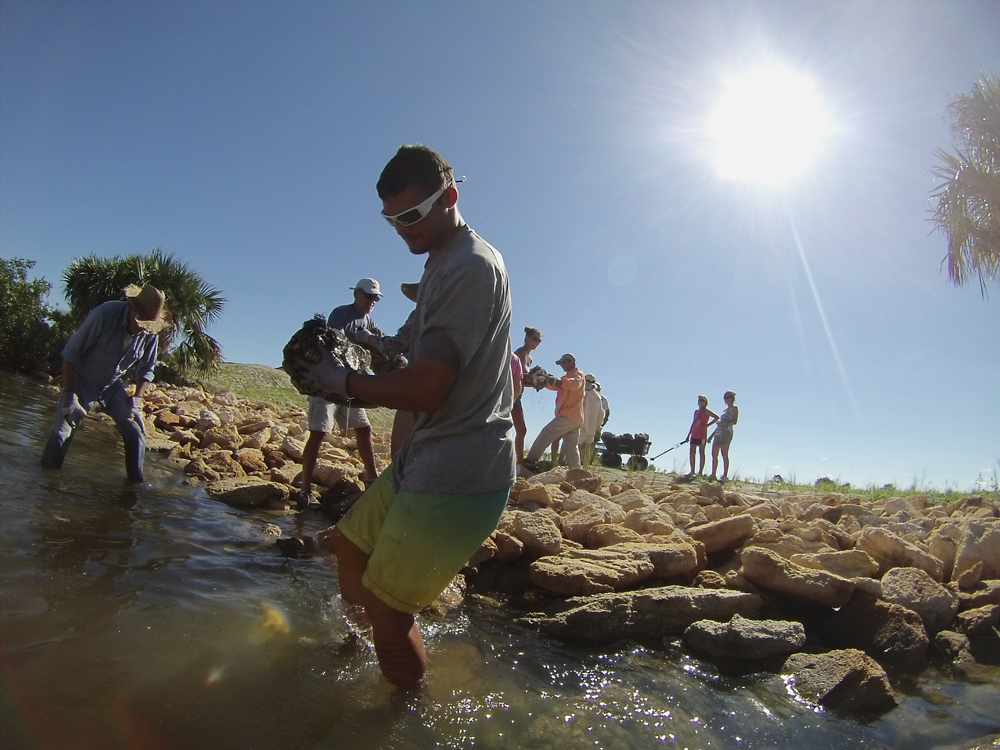
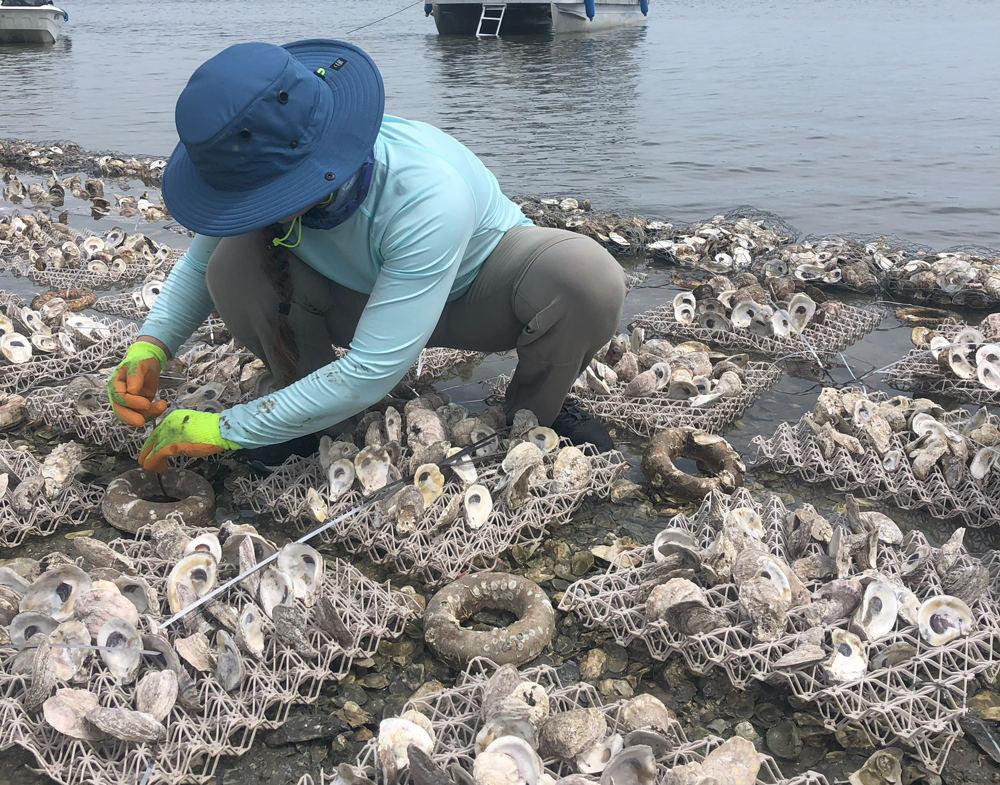
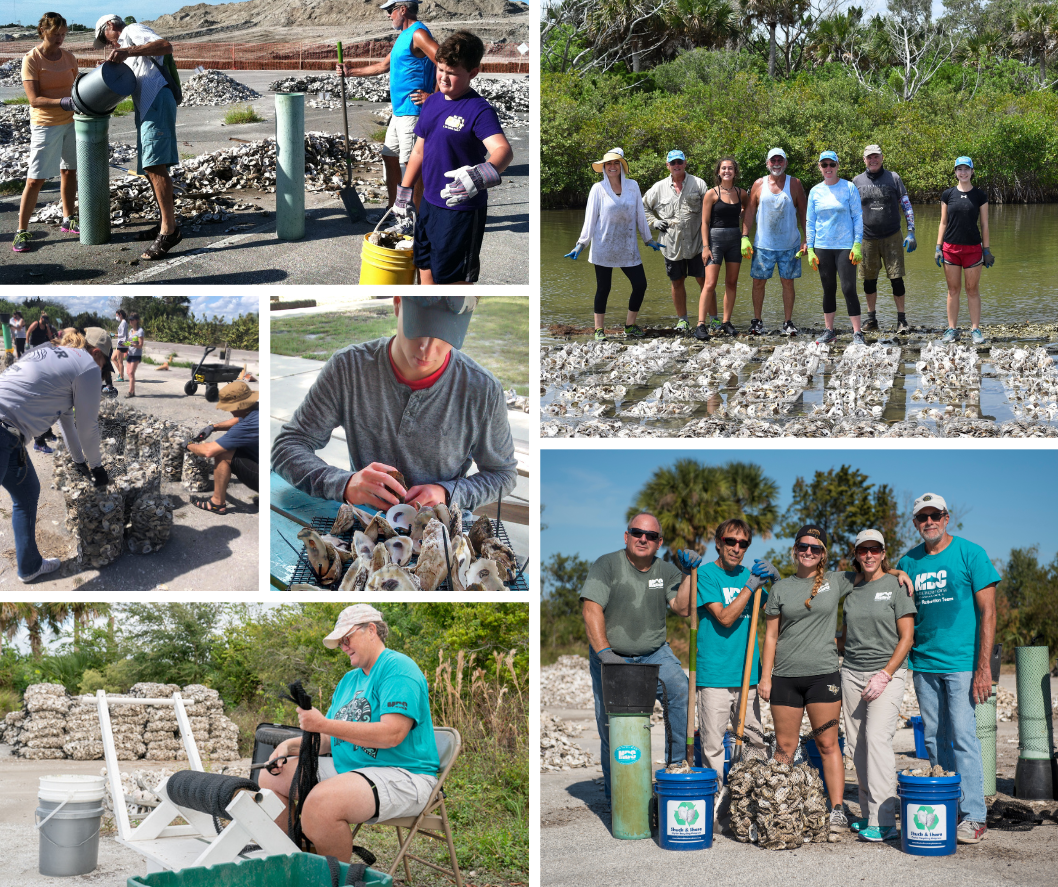
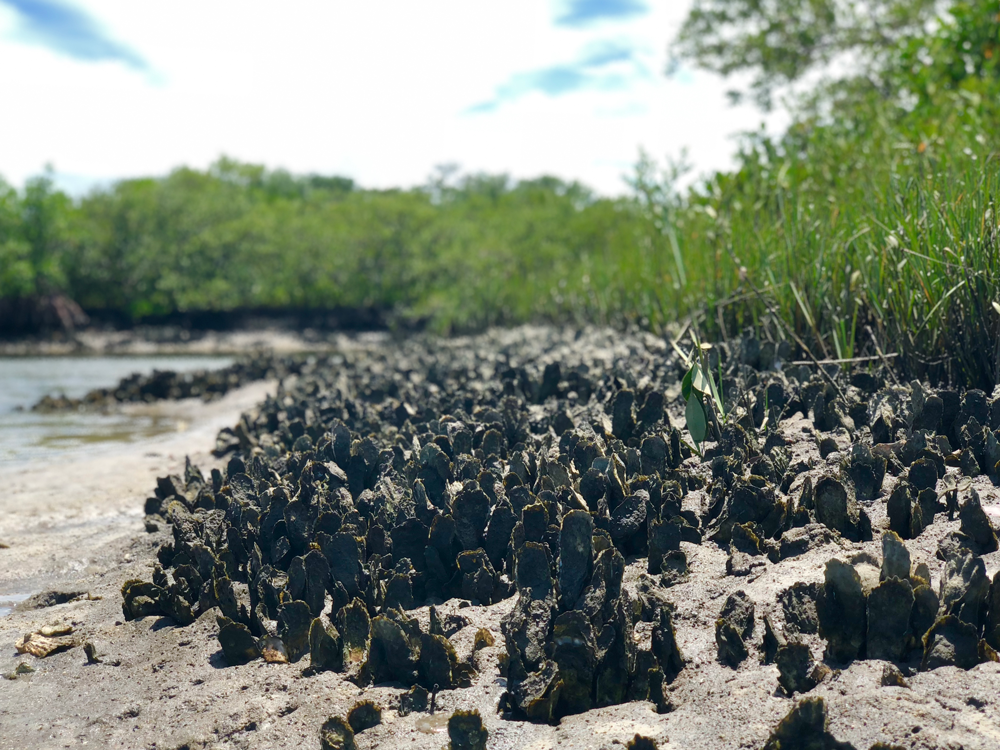

Follow Us!